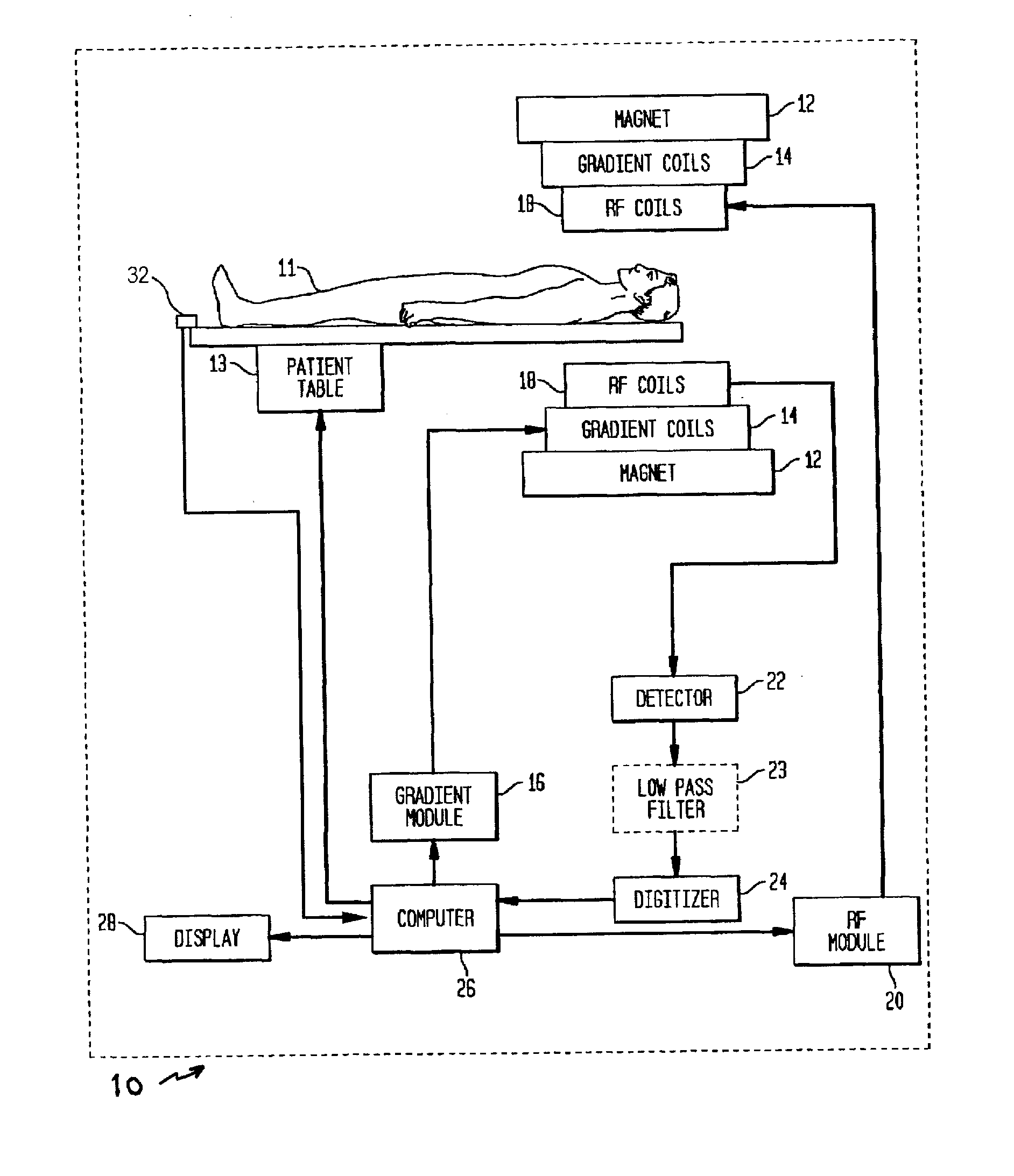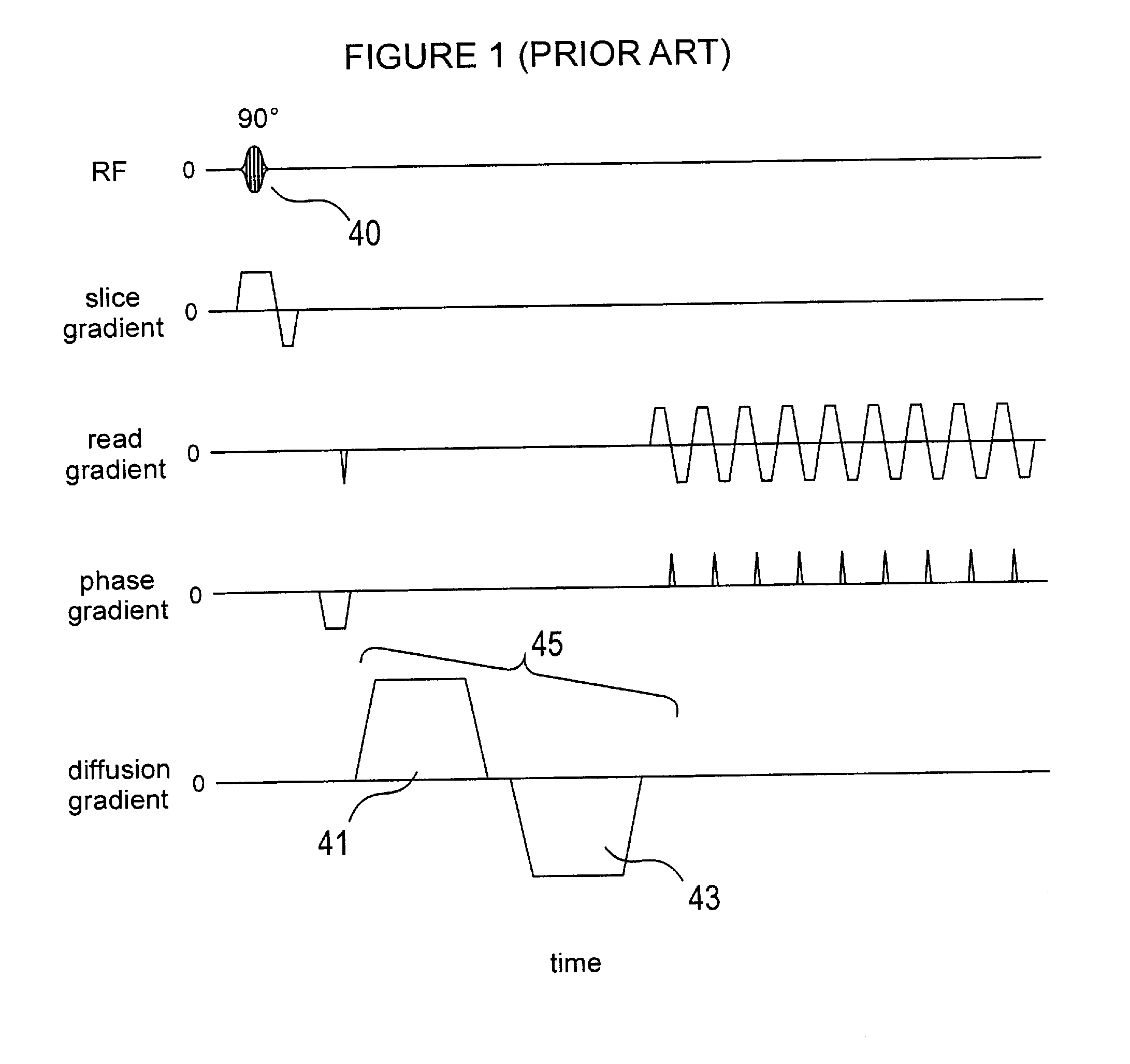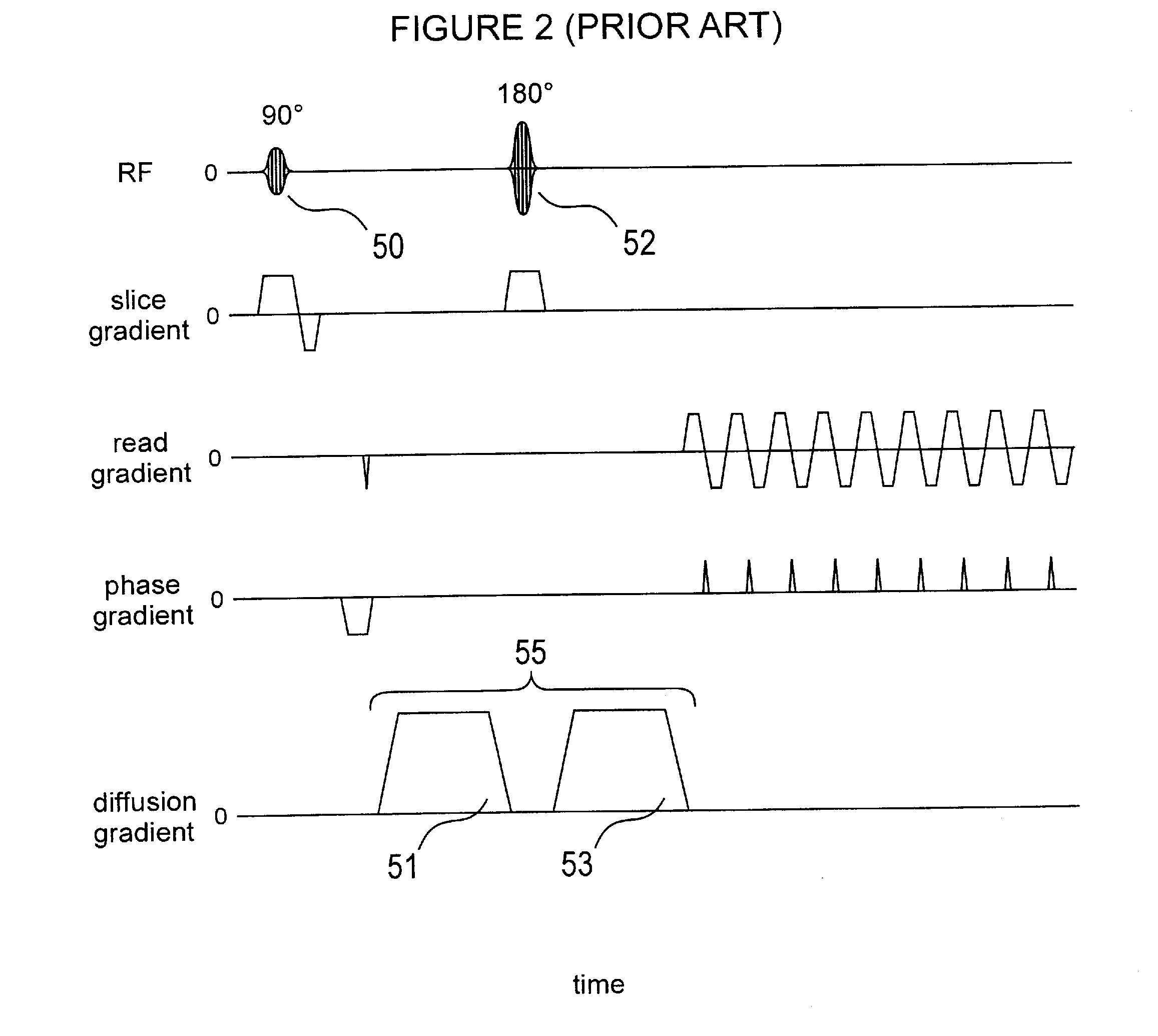Method and apparatus for improving the quality of mr images sensitized to molecular diffusion
- Summary
- Abstract
- Description
- Claims
- Application Information
AI Technical Summary
Benefits of technology
Problems solved by technology
Method used
Image
Examples
Embodiment Construction
[0026]FIG. 5 shows a block diagram illustrating the operation of an MR imaging system 10 which may be used in connection with the method and apparatus of the invention. Since such imagers are well known, what follows is only a brief overview description of such a device. In the interest of brevity and clarity, throughout the remaining description only specific changes from known and conventional parameters are provided, in order to give the reader a complete understanding of the invention without undue complexity.
[0027]A magnet 12 is provided for creating a static / base magnetic field in a body 11 positioned on a table 13 to be imaged. Within the magnet system are gradient coils 14 for producing position dependent magnetic field gradients superimposed on the static magnetic field. Gradient coils 14, in response to gradient signals supplied thereto by a gradient module 16, produce the position-dependent magnetic field gradients in three orthogonal directions. Within the gradient coils...
PUM
 Login to View More
Login to View More Abstract
Description
Claims
Application Information
 Login to View More
Login to View More - Generate Ideas
- Intellectual Property
- Life Sciences
- Materials
- Tech Scout
- Unparalleled Data Quality
- Higher Quality Content
- 60% Fewer Hallucinations
Browse by: Latest US Patents, China's latest patents, Technical Efficacy Thesaurus, Application Domain, Technology Topic, Popular Technical Reports.
© 2025 PatSnap. All rights reserved.Legal|Privacy policy|Modern Slavery Act Transparency Statement|Sitemap|About US| Contact US: help@patsnap.com



